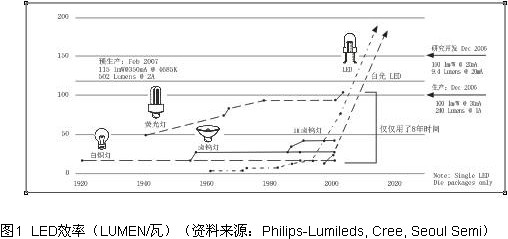In the past fifteen years, energy demand has increased tenfold and energy costs have quadrupled. Power outages and power cuts have occurred in the United States and Other countries, and this situation will continue to worsen as energy demand grows and energy production fails. According to the latest report from North American Electric Reliability Corp, it is estimated that in the next decade alone, the US electricity demand will increase by 141,000 megawatts, while the new resources confirmed in the same period are only 57,000 megawatts. This resulted in a gap of 84,000 megawatts, equivalent to the total power generation of 160 large power plants.
According to the US Energy Information Administration, power generation (mostly supplying power to lighting applications) produces 37% of greenhouse gases, so we should start looking for alternative energy sources such as solar energy. Solar energy is a green technology and costs no as much as hydropower, geothermal or nuclear energy.
In the 21st century, up to 300 million households in developing countries lack adequate lighting. The reasons may vary, but may include purchasing power (too high cost), lack of infrastructure, and imbalance between supply and demand. Many homes use homemade kerosene lamps and candles to illuminate them. These dim, yellow, black smoke sources are extremely hazardous and environmentally unfriendly. In the long run, they cost more than bright, white, solar-powered, high-brightness light-emitting diode (HBLED) sources.


1. Why choose HBLED for lighting?
(1) Longer life
LEDs are longer than any other source and have a lifetime of more than a decade in many applications. They contain solid-state technology similar to that used in the latest microprocessors. These solid-state devices have no moving parts, no fragile glass, no mercury, no harmful gases, no filaments. There are no things that can be broken, broken, shattered, exposed or contaminated. Unlike typical conventional light sources, LEDs do not suddenly fail or burn out. The LED light source does not suddenly stop working at any time, but the LED performance will gradually decrease over time. It is predicted that the average brightness of most LEDs after 50,000 hours of operation will still be 70% of the initial brightness. For example, in an application environment where the light source is used for 12 hours per day for 365 days per year, the system that has been used for more than eleven years has only 30% attenuation of the initial luminance output (70% lumen maintenance).
(2) Reduce maintenance costs
Since the LED-based light source lasts ten times longer than a conventional light source and does not require frequent replacement, it reduces or even eliminates daily maintenance costs and periodic replacement costs. This is especially important in critical, modulated lighting applications such as buoys, beacon lights, emergency exit lighting, backup lighting, and security lighting, which typically require periodic lamp replacement.